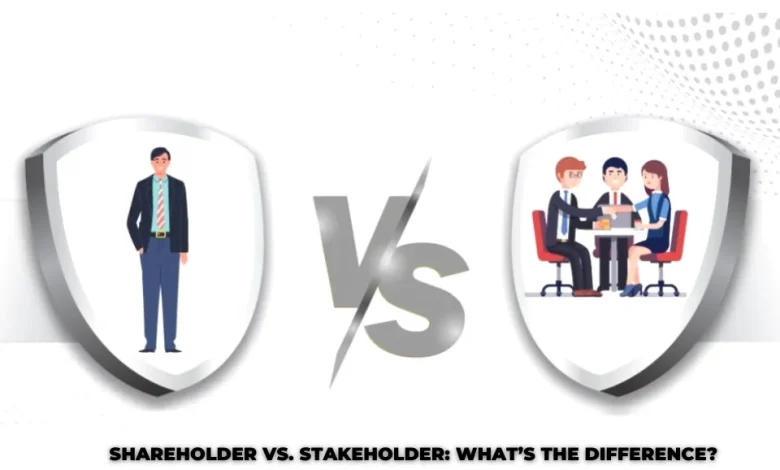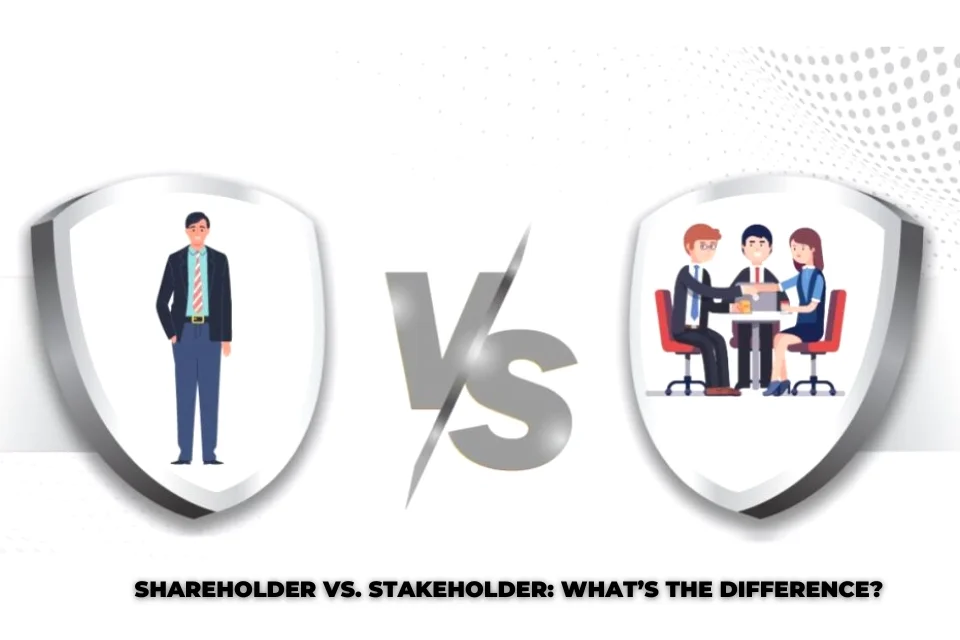Shareholder vs. Stakeholder: Key Differences Explained

In the world of business and finance, the terms shareholder and stakeholder are often used interchangeably, but they carry distinct meanings and implications. Understanding the difference between these two groups is essential for grasping their roles, interests, and the impact they have on an organization. This article delves into the definitions, roles, and key differences between shareholders and stakeholders.
What Is a Shareholder?
A shareholder, sometimes called a stockholder, is an individual or entity that owns shares or stock in a company. Shareholders are partial owners of the company and have a vested financial interest in its success. Their primary concern is the profitability and growth of the organization, which directly impacts the value of their shares.
Key Characteristics of Shareholders:
- Ownership Rights: Shareholders own a portion of the company through stock ownership.
- Financial Interest: Their main goal is to earn returns, such as dividends or capital gains.
- Limited Role: Shareholders typically do not participate in daily operations but influence decisions through voting rights.
- Focus on Profitability: The financial health of the company is their primary concern.
What Is a Stakeholder?
A stakeholder is any individual, group, or organization that is affected by or can affect a business’s operations and performance. Stakeholders include a broader range of people and entities beyond just shareholders, such as employees, customers, suppliers, creditors, local communities, and regulators.

Key Characteristics of Stakeholders:
- Broader Interest: Stakeholders care about various aspects of a company’s operations, including social, environmental, and economic factors.
- Direct or Indirect Impact: They can influence or be influenced by the organization’s actions, positively or negatively.
- Diverse Groups: Stakeholders can be internal (e.g., employees) or external (e.g., customers and communities).
- Focus on Sustainability: They often emphasize long-term value, ethical practices, and corporate responsibility.
Shareholder vs. Stakeholder: Key Differences
| Aspect | Shareholder | Stakeholder |
|---|---|---|
| Definition | An individual or entity owning shares in a company. | Any individual, group, or organization affected by or affecting the company. |
| Ownership | Holds ownership through stock or equity. | May or may not have ownership in the company. |
| Interest | Focused on financial returns and company profitability. | Concerned with broader impacts like job security, customer satisfaction, and ethical operations. |
| Scope | Narrow scope, limited to those who invest in the company. | Broader scope, including employees, customers, suppliers, and the community. |
| Influence | Direct influence through voting rights on key company decisions. | Influence through feedback, partnerships, and public opinion. |
| Priority | Prioritizes short-term financial gains. | Focuses on long-term sustainability and ethical practices. |
| Examples | Investors, stockholders, equity partners. | Employees, customers, regulators, suppliers, and local communities. |
Interconnection Between Shareholders and Stakeholders
While shareholders and stakeholders have distinct roles and interests, their goals often overlap. For example:
- A company that satisfies stakeholders, such as employees and customers, is likely to perform well financially, which benefits shareholders.
- Conversely, a focus on profitability and shareholder value can result in practices that harm stakeholders, such as cost-cutting measures affecting employees or suppliers.
Related Link: Stakeholders Meaning in Business Management
Corporate Decisions: Balancing Shareholders and Stakeholders
Companies often face challenges in balancing the interests of shareholders and stakeholders. For instance, a decision to increase dividends for shareholders might require cost reductions that could affect employee wages or community programs.
Shareholder-Centric Approach:
In a shareholder-centric model, the primary focus is maximizing profits and returns. This approach is prevalent in publicly traded companies where shareholders’ interests are given priority.
Stakeholder-Centric Approach:
Stakeholder-focused businesses aim to balance profitability with social responsibility. They recognize that long-term success depends on positive relationships with all stakeholders, including employees, customers, and communities.
Real-World Examples of Shareholder vs. Stakeholder Conflicts
- Amazon: Shareholders may prioritize higher profits, while stakeholders, such as employees and communities, emphasize fair wages and ethical labor practices.
- Tesla: Shareholders focus on stock performance, while stakeholders may highlight environmental sustainability and customer satisfaction.
Evolving Trends: Stakeholder Capitalism
In recent years, the focus has shifted towards stakeholder capitalism, which emphasizes creating value for all stakeholders rather than solely maximizing shareholder returns. Organizations are increasingly adopting Environmental, Social, and Governance (ESG) principles to address stakeholder concerns.
Conclusion
The distinction between shareholders and stakeholders lies in their scope of interest and involvement with a company. Shareholders prioritize financial returns, while stakeholders care about a broader range of factors, including sustainability, ethics, and community impact. Modern businesses must find a balance between these two groups to ensure long-term success, ethical operations, and sustainable growth. Recognizing and managing these relationships effectively is key to thriving in today’s interconnected world.
FAQs :
1. Who is a shareholder?
A shareholder is a person or organization that owns stock or shares in a business. They are partial owners and have a vested financial interest in the company’s profitability and growth.
2. Who is a stakeholder?
A stakeholder is any individual, group, or organization affected by or capable of affecting a business’s operations and performance. Stakeholders can include employees, customers, suppliers, creditors, communities, and regulators.
3. What are the primary differences between shareholders and stakeholders?
The main differences lie in their roles and interests:
- Shareholders have a financial ownership in the company and prioritize returns on investment.
- Stakeholders may not have ownership but are invested in the company’s broader impact, including social, environmental, and ethical aspects.
4. Can someone be both a shareholder and a stakeholder?
Yes, a person or entity can be both. For example, an employee who also owns company shares is both a shareholder and a stakeholder.



